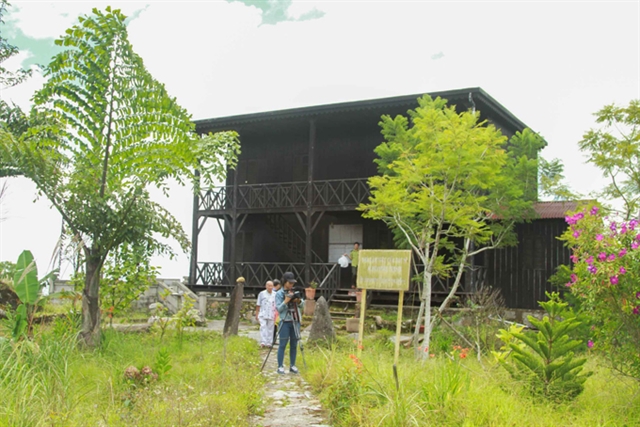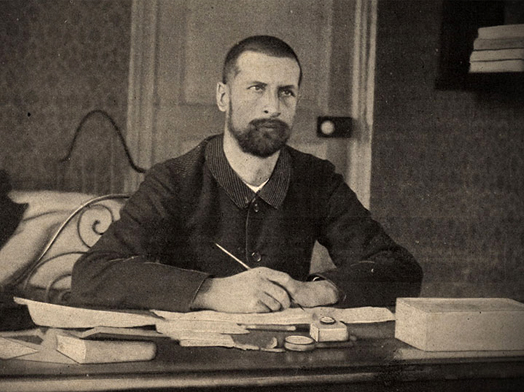
Scientist Alexandre Yersin’s workplace on Hòn Bà Mountain has become a national historic site. — Photo baokhanhhoa.vn
KHÁNH HÒA — Alexandre Yersin's workplace on Hòn Bà Mountain, located in the Suốt Cát Commune of the south central province of Khánh Hòa, has been accorded the status of a national historic site by the Minister of Culture, Sports and Tourism.
Ealier, on September 28, 1990, the Ministry of Culture, Information, Sports and Tourism (now known as the Ministry of Culture, Sports and Tourism) classified the historic site commemorating the Swiss scientist in Khánh Hòa as a national relic.
The relic comprises a cluster of distinct, representative, and significant locations that are intrinsically linked to the life and vocation of scientist Yersin. This includes the library at the Pasteur Institute Nha Trang in Nha Trang City, the Linh Sơn Pagoda, and Yersin's Graveyard in the Suối Cát Commune.
In 2021, the Association of Admirers of Dr Yersin proposed to Khánh Hòa provincial authorities to consider ranking the doctor’s workplace relic on Hòn Bà Mountain, to preserve and promote its historical values, along with the historic site commemorating the Swiss scientist.
More than 1,500m above sea level, Hòn Bà is a mountain located between Khánh Phú Commune, Khánh Vinh District and Suối Cát Commune, Cam Lâm District in Khánh Hòa Province, about 60km from Nha Trang City to the southwest.
In 1914, Dr Yersin surveyed the mountain and piloted growing several industrial plants, including quinquina, a valuable medicinal herb for treating malaria.
Hòn Bà has a cool climate all year round that is suitable for cultivating many medicinal plants.
The Swiss doctor decided to build a big wooden house at the top of this mountain to live in and study medicine. However, this site was later abandoned, and only the house's foundations remained.
In 2005, Yasaka-Saigon-Nha Trang Joint Stock Company, authorised by Khánh Hòa Province's People's Committee to manage the site and rebuild the wooden house on the old foundation.
The structure of the two-storey new house adapted that of its former, constructed with black painted wood and having a red-brown corrugated iron roof. Inside the house, images and artefacts related to Dr Yersin are displayed.
In 2016, Yasaka-Saigon-Nha Trang Joint Stock Company handed over the site's management to Khánh Hòa Province. It is now a part of Hòn Bà Nature Reserve, managed by the Management Board of the nature reserve under the Department of Agriculture and Rural Development of Khánh Hòa Province.

As well as being a scientist, Doctor Alexandre Yersin was also an explorer and pioneer in many fields. File photo
Doctor Alexandre Yersin was born on September 22, 1863, in Lavaud, County Vaud, Switzerland. In 1891, he arrived in Nha Trang and spent nearly half a century living and working there until his death on March 1, 1943.
The years of choosing Nha Trang as his second homeland are also the period marking his career as a great scientist of mankind and his great contributions to the Vietnamese people.
He completed 55 kinds of scientific research, including the scientific work he collaborated with French bacteriologist Emile Roux to discover diphtheria toxin and research on the treatment of malaria from the quinquina tree.
The doctor experimented with planting rubber, cocoa, coffee and tea varieties from Europe to Việt Nam. He was also one of the founders of Indochina veterinary medicine and the discoverer of Hòn Bà Mountain in 1863 and Langbiang Plateau in 1893, which is Đà Lạt City today.
After founding the Pasteur Institute in Nha Trang, Dr Yersin contributed to the establishment of Pasteur Institutes in Hà Nội and Đà Lạt, and managed the system of Pasteur Institutes in Indochina. He was also the founder of Indochina Medical College (now Hanoi Medical University) on February 27, 1902, and was the first principal of the college. — VNS
OVietnam